Brie is a French cheese with noble mold belonging to the group of soft cheeses. Often called the "queen of cheese" Brie is probably the most popular, known and loved the world over French cheese. Its name comes from the nice historic French Brie area, located in the central region Ile-de-France, department of Seine-et-Marne. It was there in the Middle Ages that this soft and fragrant delicacy was first done.
Brie is made from cow's milk has a slightly greyish-yellow color and is covered with noble mold, white in color. Its consistency is slightly gelatinous mold and has a slight spicy flavor with a slight smell of ammonia and fruity notes.
Brie has a pronounced aroma with a hint of nuts. This masterpiece of mature milk ages between 2 and 4 weeks - the longer the ripening process, the more the taste and smell are exacerbated. His white moldy crust is dotted with beige-pink spots.
Bearing the nickname Royal Cheese in the Middle Ages, Brie was one of the dues paid to the French kings. The production of this specialty was concentrated only in the rural farms up to the second half of the 19th, but its popularity grew and the demand for Brie became increasingly large scale.
The beginning of the industrial production of Brie is set in late 19th century. Only in the early 20th century, Brie begins to be mass produced, in the form we know it today.
Types of Brie cheese
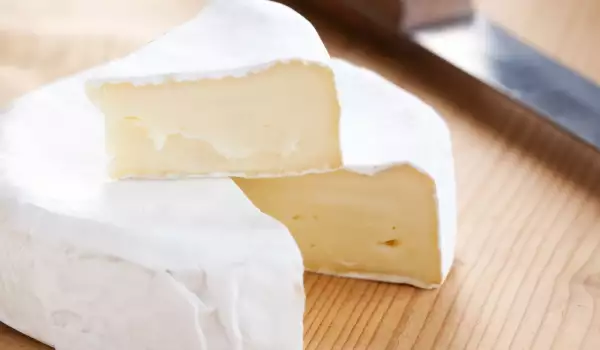
Brie de Meaux
Called "Royal Cheese" because it was a favorite of Charlemagne, Queen Margot and Henry IV. After the Revolution, it acquired the nickname King of cheeses. Produced in the vicinity of Meaux from unpasteurized cow's milk. Maturing takes it about 3 weeks and one cake asks for 25 liters of milk;
Brie de Melun
This type of Brie is a trademark of farms. There is a soft paste inside under the white mold, dotted with brown stripes. It is characterized by high fat - about 45%, but has a unique fruity taste. One cake is produced from 14 liters of cow's milk and matures in 4 weeks;
Brie de Coulomiers
This Brie began increasingly to be used as a base and is transformed into being a separate type of cheese.
The Brie de Meaux and Brie de Melun French brands are preserved and protected in the EU from 1980 in the list of products with declared geographical origin from the French region of Brie. However, Brie Cheese is produced throughout the world, even American Brie has won world awards for taste and quality.
Composition of Brie cheese
Usually Brie contains between 45 to 50% fat and 20 to 25% - protein. This masterpiece of French Milk is a good source of protein and fat, so we should not go overboard with its consumption. 100 g of Brie can contain about 30-40 grams of protein in some cases. It also has notable amounts of Vitamin B12 and Vitamin B2.
Approximate nutritional information per 100 g brie cheese:

Calories 334 Kcal, Fat 28 g, Cholesterol 100 mg, Sodium 629 mg, Protein 21 g, Calcium 18% of your daily dose
How to make Brie?
Usually Brie cheeses are produced in diameters ranging from 30 to 60 cm and a thickness of 3-5 cm is believed that the thicker cakes are of poorer quality because their middle remains poorly ripened and the ends are overripe. As a rule, fine, the white mold is edible, although it has no taste. Some regard the aroma and taste of brie as slightly mushroomy.
Production of brie can be from both, whole and skimmed cow's milk, the cheese made with rennet, with milk at body temperature. For removal of layers of curd that strain it, they use special sieves. The curd is salted and bacteria such as Penicillin (Penicillium candidum, Penicillium camemberti) is added.
These are the same bacteria that are used in camembert, along with Brevibacterium bacteria. Brie should ripen at 10 degrees for a minimum of 3-4 weeks for best flavor.
Brie combs are formed into a flat cake with a diameter of 22 to 36 cm The original Brie cheese is stabilized, with a complex flavor that appears only when the surface becomes slightly brown. Only then is the Brie ripe.
Culinary use of Brie
Brie itself is so fragrant and delicious, it does not need to undergo any culinary changes. It is best to serve small slices at room temperature, combined with fruit or jam. Brie is often served simply with toast or bruschetta. The fragrant scent combines perfectly with figs, melons, grapes and apples.
It is almost a law that when serving brie with fruit, you serve wine, the best flavors are white (of course, you can also go with red). Brie is perfectly matched with champagne and sparkling wines, like Chardonnay and Pinot Noir, Chateau Clarke, Traminer, Muscat.
The unique taste and generous flavor of Brie are often used in different sauces. In addition to fruit, this French soft cheese’s flavor achieves symbiosis with meats and vegetables. It combines well with nuts.
Selection and storage of Brie
Good Brie cheese can be recognized a slimmer size, smoked soft yellow inside and white noble mold with slightly darker shades. Overripe Brie can be recognized by a browning of the skin and strong smell of ammonia.
Usually a cut in Brie stops the ripening process, and from then, the cycle goes backwards. Sliced Brie has a short shelf life - most often within a few days. If the Brie is intact, it can withstand storage in refrigerator and temperatures of up to +4 degrees.
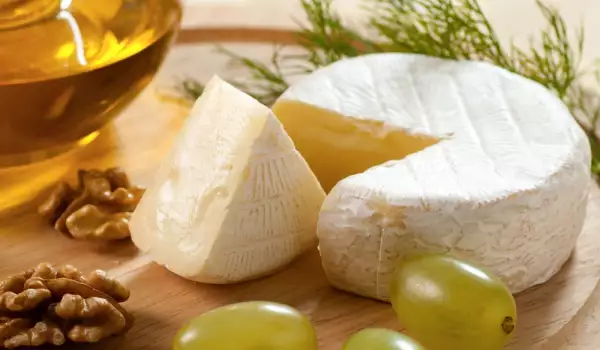
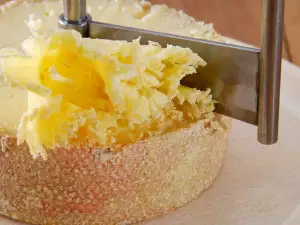







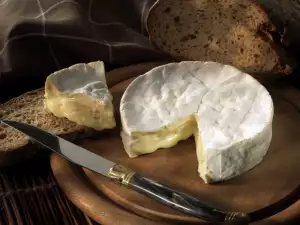


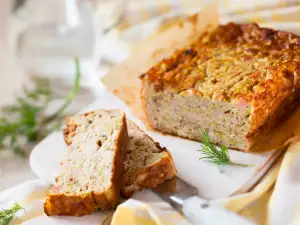







Comments